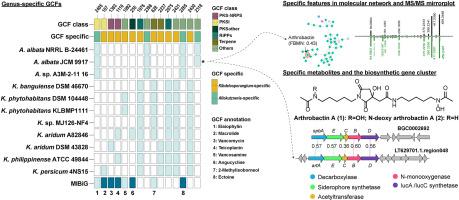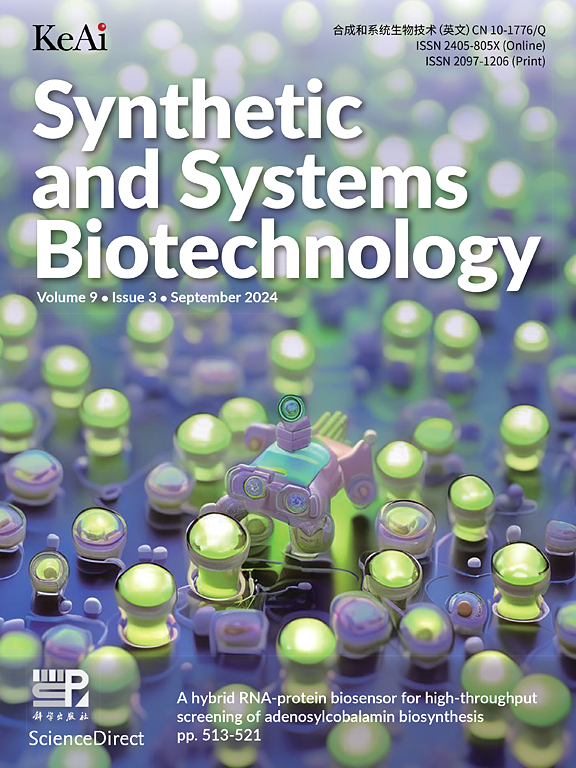Genus-specific secondary metabolome in Allokutzneria and Kibdelosporangium
Abstract
Rare actinomycete genera are highly recognized as a promising source of structurally diverse and bioactive natural products. Among these genera, Allokutzneria and Kibdelosporangium are two phylogenetically closely related and have been reported to encode some valuable biosynthetic enzymes and secondary metabolites. However, there is currently no relevant systematic research available to outline the linkage of genomic and metabolomics for specific secondary metabolites in these two promising genera. In this study, we first investigated the genus-specific secondary metabolic potential in Allokutzneria and Kibdelosporangium by comparing the diversity and novelty of their secondary metabolite biosynthetic gene clusters (BGCs). The specific secondary metabolites produced by two representative strains of these genera were comprehensively investigated using untargeted metabolomics techniques. The findings unveiled that the majority (95.4%) of the gene cluster families (GCFs) encoded by Allokutzneria and Kibdelosporangium were genus-specific, including NRPS GCFs encoding siderophores. The untargeted metabolomics analysis revealed that the metabolic profiles of two representative strains exhibit extensive specificity, with the culture medium having a big impact on the metabolic profiles. Besides, an MS-cluster featuring a series of hydroxamate-type siderophores was identified from Allokutzneria albata JCM 9917, with two of them, including a novel one (N-deoxy arthrobactin A), being experimentally validated. The present study offers valuable insights for the targeted discovery of genus-specific natural products from microorganisms.


 求助内容:
求助内容: 应助结果提醒方式:
应助结果提醒方式:


